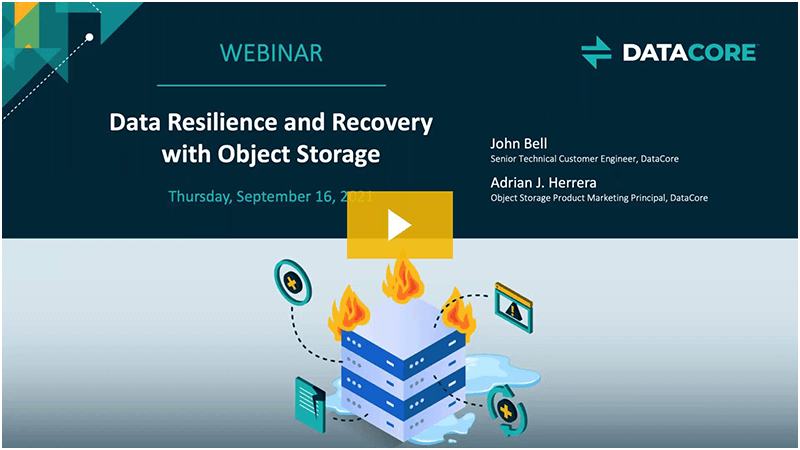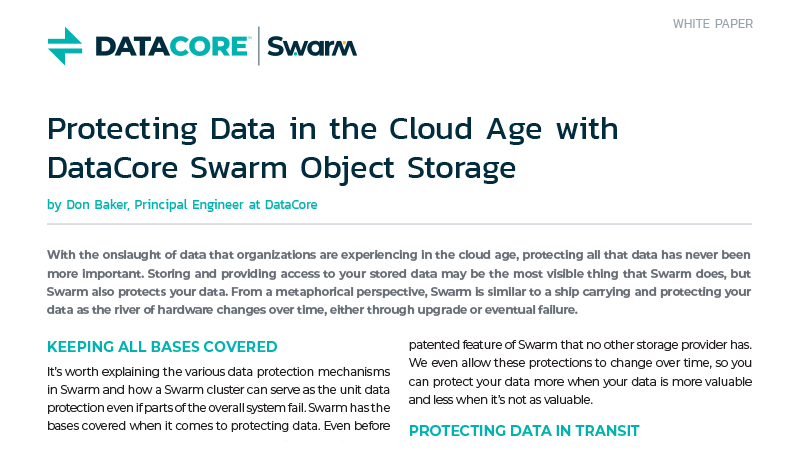With the onslaught of data that organizations are experiencing, data protection has never been more critical. In addition to storing and providing data access on a scalable object storage platform, DataCore Swarm also provides built-in data protection capabilities to improve resilience and data durability.
Swarm’s Elastic Content Protection combines automated management of replication and erasure coding with continuous integrity checks and fast volume recovery. All nodes participate in recovery of lost data through Swarm’s innovative distributed algorithm, which gets faster as the cluster grows.
Optimize for Durability or Access
With its combined data resilience and recovery mechanisms, Swarm takes the worry out of protecting your data, ensuring it is always available. These mechanisms work with minimal configuration or manual intervention.
Erasure coding reduces the storage footprint and increases data durability, while replication ensures rapid access. Choose the protection method that fits your business, retention, or service level agreement (SLA) requirements. Set protection policies per object, and store replicated and erasure-coded objects on the same servers, ensuring optimal hardware use. Automatically shift between protection methods based on age, size, location, or type.

Data Resilience and Recovery with Object Storage

Protecting Data in the Cloud Age with Swarm
Meet Compliance Regulations
Swarm provides additional content protection capabilities that allow you to meet regulatory mandates that require content to be stored on non-erasable, non-rewritable media. Swarm lets you use Legal Hold to create a point-in-time snapshot of a specified set of files at a specified time. The files are then immutably stored regardless of what happens to the original file or cluster. Patented technology lets you prove in a court of law that content has not been tampered with or altered. Integrity seals are based only on content and can be upgraded as newer hashing algorithms replace outdated ones.
Get Started with Swarm, Software-Defined Object Storage
Store your growing data on scalable & secure active archive. No more insane cloud costs!
Join thousands of IT pros who have benefitted from DataCore solutions.
“Scalability is one of the slickest things about Swarm. One sweet thing with the platform is when you drop a new node in, it builds itself from the ground up. If you want to add a 72 TB or PB node you just drop it in.”